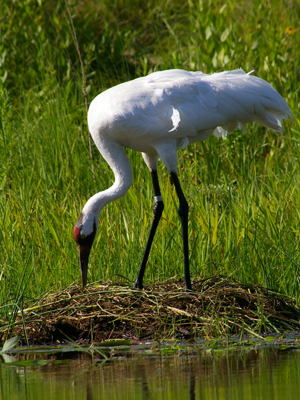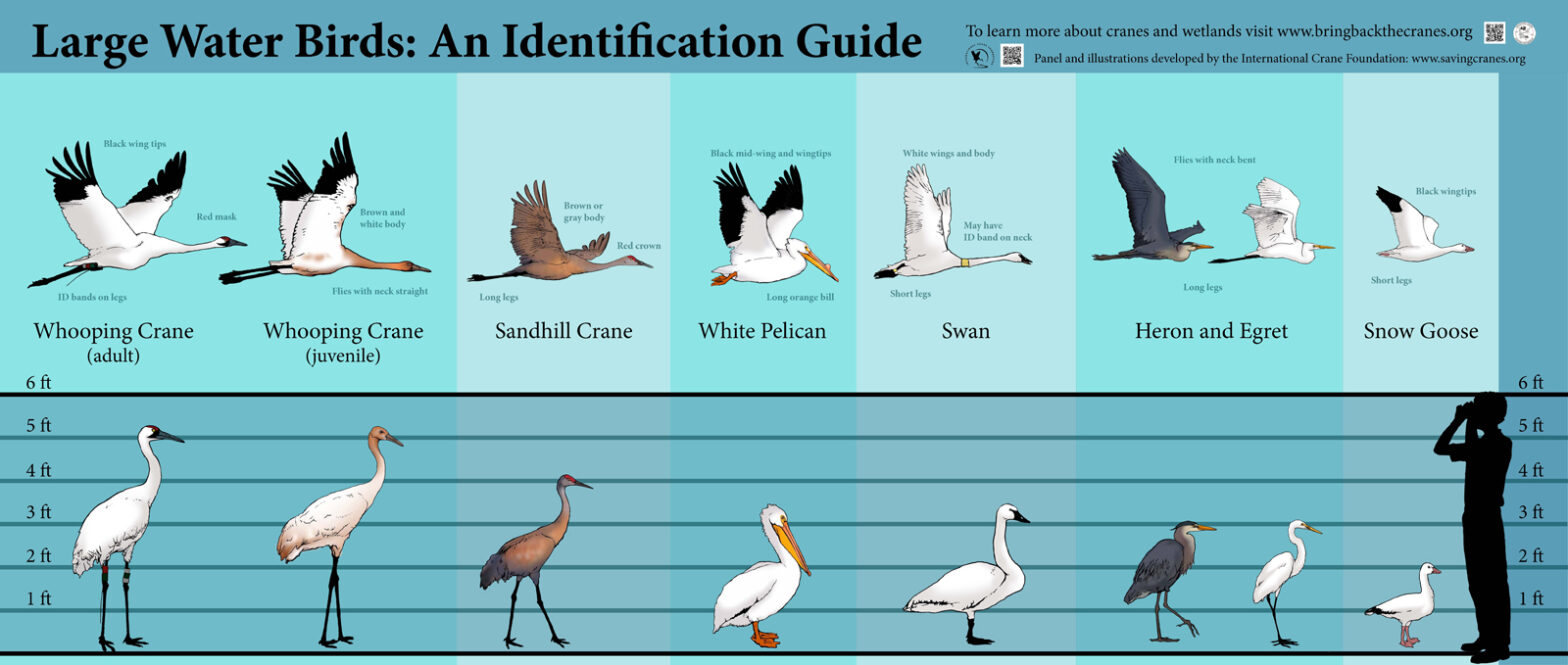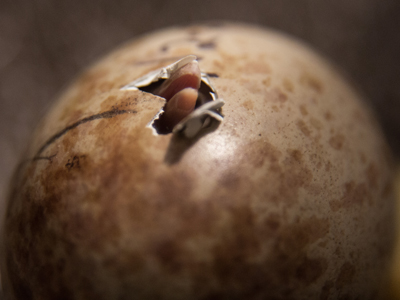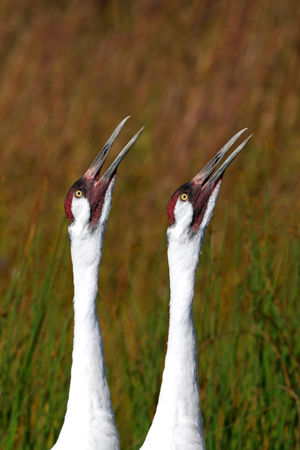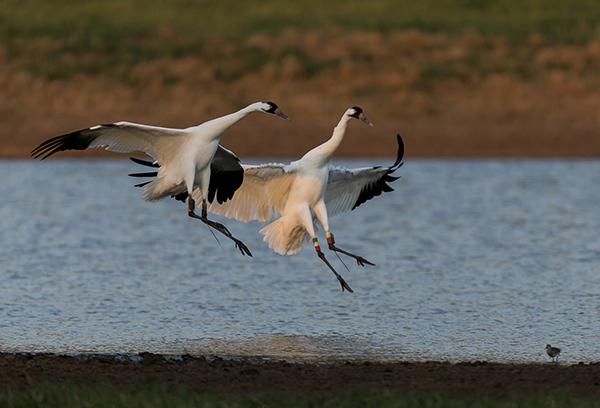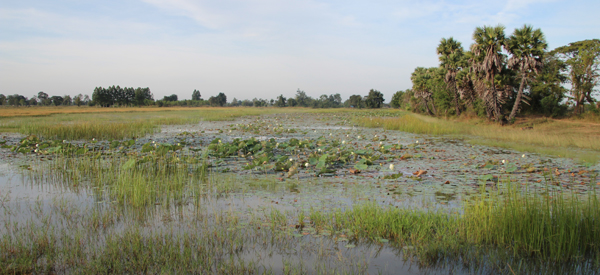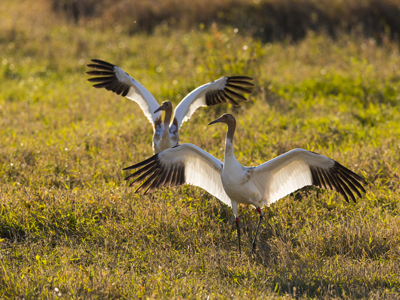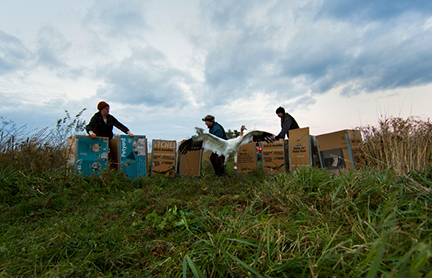 ICF’s captive Whooping Cranes are laying eggs – breeding season is here! A tradition at ICF is to follow our “Egg Score Card,” which tracks the Whooping Crane eggs from our captive flock, as well as wild Whooping Crane nests in Wisconsin.
ICF’s captive Whooping Cranes are laying eggs – breeding season is here! A tradition at ICF is to follow our “Egg Score Card,” which tracks the Whooping Crane eggs from our captive flock, as well as wild Whooping Crane nests in Wisconsin.
Tag: Reintroduction
USFWS Announces 2013 Shooting of Whooping Crane in Wisconsin

Wisconsin is home to a long legacy of ethical hunters and bird enthusiasts that dates back to before Aldo Leopold’s A Sand County Almanac of the mid-1900s. In the spirit of Leopold’s land ethic, we need your help.
First Whooping Crane of the Season Hatches at Necedah Refuge

The Whooping Crane Eastern Partnership and staff at Necedah National Wildlife Refuge in Wisconsin are celebrating the first wild Whooping Crane chick of the 2014 season. The chick represents the latest success in the effort to sustain a wild migratory population of endangered Whooping Cranes in eastern North America.
Travels with George: South Carolina 2014
 The ACE Basin encompasses 209,000 acres of wetlands where the Ashepoo, Combahee and Edisto rivers join in western South Carolina – the largest undeveloped estuary along the Atlantic Coast of the United Sates.
The ACE Basin encompasses 209,000 acres of wetlands where the Ashepoo, Combahee and Edisto rivers join in western South Carolina – the largest undeveloped estuary along the Atlantic Coast of the United Sates.
Whooping Cranes Need Your Voice
 The International Crane Foundation (ICF) is deeply concerned about the recent reports of Whooping Cranes being shot in Kentucky and Louisiana, adding to the frightening series of shootings of these highly endangered birds.
The International Crane Foundation (ICF) is deeply concerned about the recent reports of Whooping Cranes being shot in Kentucky and Louisiana, adding to the frightening series of shootings of these highly endangered birds.
Travels with George: Florida 2014
 Late Sunday afternoon of January 5, 2014, while Baraboo was in the grips of an extremely cold winter, I had the privilege of meeting my friends and conservationists, Colin and Anne Phipps, near Tallahassee, Florida. We were waiting, in company with about 40 others, for a pair of Whooping Cranes to land beside a large pond in a cow pasture near balmy Tallahassee.
Late Sunday afternoon of January 5, 2014, while Baraboo was in the grips of an extremely cold winter, I had the privilege of meeting my friends and conservationists, Colin and Anne Phipps, near Tallahassee, Florida. We were waiting, in company with about 40 others, for a pair of Whooping Cranes to land beside a large pond in a cow pasture near balmy Tallahassee.
Reward Offered for Whooping Cranes Shot in Western Kentucky
 The U.S. Fish & Wildlife Service has announced the November 2013 deaths of two Whooping Cranes (pair 33-07 and 05-09) in Kentucky. The death of the cranes is likely due to illegal shooting.
The U.S. Fish & Wildlife Service has announced the November 2013 deaths of two Whooping Cranes (pair 33-07 and 05-09) in Kentucky. The death of the cranes is likely due to illegal shooting.
Travels with George: Thailand Fall 2013
 Mid-morning, November 25, Thai colleagues and I are observing a pair of yearling Eastern Sarus Cranes digging and swallowing large sedge tubers from a harvested rice paddy near the Jorakae Non-hunting Area. To farmers, the sedges are weeds and thus killed by herbicides. So perhaps the cranes are, in a small way, helping the farmers. Suddenly an elderly man appeared riding a bicycle along the dirt road. His name was Mr. Nhu Pogang, and he has been a resident of this area for all of his 83 years. In his youth, the region was mostly forested with open wetlands in low-lying areas and cranes were common.
Mid-morning, November 25, Thai colleagues and I are observing a pair of yearling Eastern Sarus Cranes digging and swallowing large sedge tubers from a harvested rice paddy near the Jorakae Non-hunting Area. To farmers, the sedges are weeds and thus killed by herbicides. So perhaps the cranes are, in a small way, helping the farmers. Suddenly an elderly man appeared riding a bicycle along the dirt road. His name was Mr. Nhu Pogang, and he has been a resident of this area for all of his 83 years. In his youth, the region was mostly forested with open wetlands in low-lying areas and cranes were common.
Young Whooping Cranes Begin Fall Migration
![]() Nineteen young Whooping Cranes are winging their way south on their first fall migration. This is the 13th group of birds to take part in the project led by the Whooping Crane Eastern Partnership (WCEP), a coalition of public and private groups that is reintroducing this highly imperiled species in eastern North America, part of its historic range.
Nineteen young Whooping Cranes are winging their way south on their first fall migration. This is the 13th group of birds to take part in the project led by the Whooping Crane Eastern Partnership (WCEP), a coalition of public and private groups that is reintroducing this highly imperiled species in eastern North America, part of its historic range.
DAR Whooping Cranes Released at Horicon National Wildlife Refuge
 Nine young Whooping Cranes were released October 24 at Horicon National Wildlife Refuge in Dodge County, Wis. The cranes are part of the Direct Autumn Release project conducted by the Whooping Crane Eastern Partnership, an international coalition of public and private organizations that is reintroducing this highly imperiled species in eastern North America, part of its historic range.
Nine young Whooping Cranes were released October 24 at Horicon National Wildlife Refuge in Dodge County, Wis. The cranes are part of the Direct Autumn Release project conducted by the Whooping Crane Eastern Partnership, an international coalition of public and private organizations that is reintroducing this highly imperiled species in eastern North America, part of its historic range.

